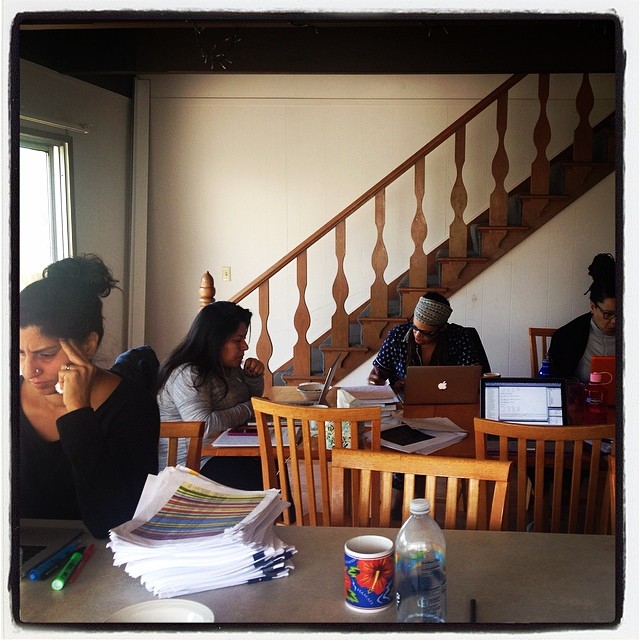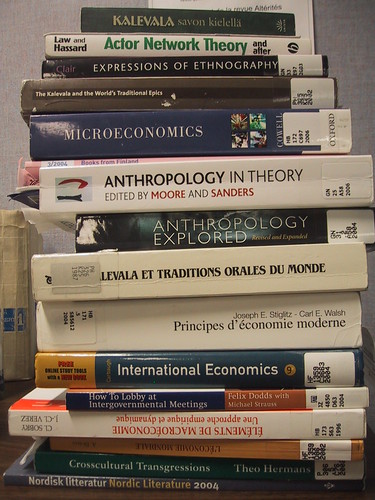For these reasons, at the end of each calendar year, I like to reflect on what I have accomplished during the year. And, occasionally, I publish these reflections on this blog, as I did in 2012.
In 2016, my biggest accomplishment for the year is an edited volume, which will come out from Oxford University Press next Fall. That project is unusual as most of the work was completed during the calendar year of 2016. Another thing I can say I did this year is I drafted three (similar) 5-page grant proposals to request seed funding for my new project on incarceration. I also drafted and got under review two co-authored articles and three book chapters. At least half of what I did this year, then, is still under review. On the other hand, I have several articles that came out this year that required little to no effort in 2016.
This reality makes it difficult to get a handle on what I actually accomplished this calendar year. I thus find it useful to break down my accomplishments by category of effort expended in 2016. This spectrum ranges from projects I began in 2016 to articles that appeared in 2016 with no effort on my part at all.
Here is a list of works I started in 2016 and their current stages.
Works I started and finished in 2016 (for the most part)
- Edited volume for OUP – in production.
- Short article with C RnRed
- Article w Z and B under review
- Three small grants for mass incarceration project drafted and under review
- Short article in Spanish written and published
- Book chapter on DR w YC written and accepted
- Book chapter on racism and deportation drafted and submitted
- OUP Race textbook second edition first complete round of revisions
- 7 online essays published
There are also two pieces that were accepted in 2016. These pieces involved significant revisions of works started in a previous year.
Works accepted in 2016 (that involved substantial revisions this year)
- ERS article w Z accepted
- Obama book chapter finished and accepted
- Book chapter for my edited volume revised and accepted
Then, there are three articles I learned were accepted in 2016, but for which most (but not all) of the work was done in previous years.
Works accepted in 2016 (where most of the work was done in a prior year
- 2016. “Parallels Between Mass Incarceration and Mass Deportation: An Intersectional Analysis” Journal of World-Systems Research 22.2: 484-509 Download here.
- 2016. “Feeling Like a Citizen, Living as a Denizen: Deportees’ Sense of Belonging” American Behavioral Scientist doi: 10.1177/0002764216664943 Download here.
- 2016. ““Negative Credentials,” “Foreign-Earned” Capital, and Call Centers: Guatemalan Deportees’ Precarious Reintegration” Citizenship Studies Download here.
Additionally, there are pieces that required no effort in 2016, but that came out this past year. (I can't even remember when I wrote #4 - maybe three years ago?)
Works published in 2016 where all the work was done in prior years.
- 2016. “A Critical and Comprehensive Sociological Theory of Race and Racism” Sociology of Race and Ethnicity 2: 2. Read online here
- 2016. “Racialized and Gendered Mass Deportation and the Crisis of Capitalism” Symposium on Race and Ethnicity in the Capitalist World-System Journal of World-Systems Research. Read online here
- 2016. “National Insecurities: The Apprehension of Criminal and Fugitive Aliens” The Immigrant Other: Lived Experiences in a Transnational World Edited by: Rich Furman, Greg Lamphear, and Douglas Epps. Columbia University Press.
- 2016. “Peru” The Wiley Blackwell Encyclopedia of Race, Ethnicity, and Nationalism, First Edition. Edited by y John Stone, Rutledge M. Dennis, Polly S. Rizova, Anthony D. Smith, and Xiaoshuo Hou.
- 2016. Review of Beneath the Surface of White Supremacy: Denaturalizing U.S. Racisms Past and Present by Moon-Kie Jung in Political Science Quarterly.
Finally, there are several works that involved research, reading, and writing, yet are not publications.
Work that is not publications but involved research and writing
- 9 interviews for new project completed
- 4 external P&T reviews
- 28 article, book, and grant reviews
- 2 grant panel reviews
- Read and took notes on 12 books on mass incarceration
- 3 Get a Life, PhD campus workshops
- 1 keynote in Spanish
- 4 invited public lectures on Deported
- 4 conference presentations
- 18 letters of recommendations
2016 was a relatively light teaching year for me yet teaching relief was replaced with a heavy service burden as I launched our Faculty Equity Advisor Program. I did not teach in the Spring of 2016 and I taught two classes in the Fall of 2016. Throughout the year, I maintained a writing schedule of one to two hours a day. I rarely wrote for less than one hour and hardly ever wrote for more than two, even when I wasn't teaching.
I always marvel and how much you can accomplish when you focus for an hour or two each day on writing. After taking account of what I have done, I can say that 2016 was a success and I can take my well-deserved end of the year two-week vacation! See you in 2017!




![[2009.05.16] UC Merced 2009 Commencement With Michelle Obama](https://c5.staticflickr.com/3/2424/3550154324_b89b4dacc2_b.jpg)






